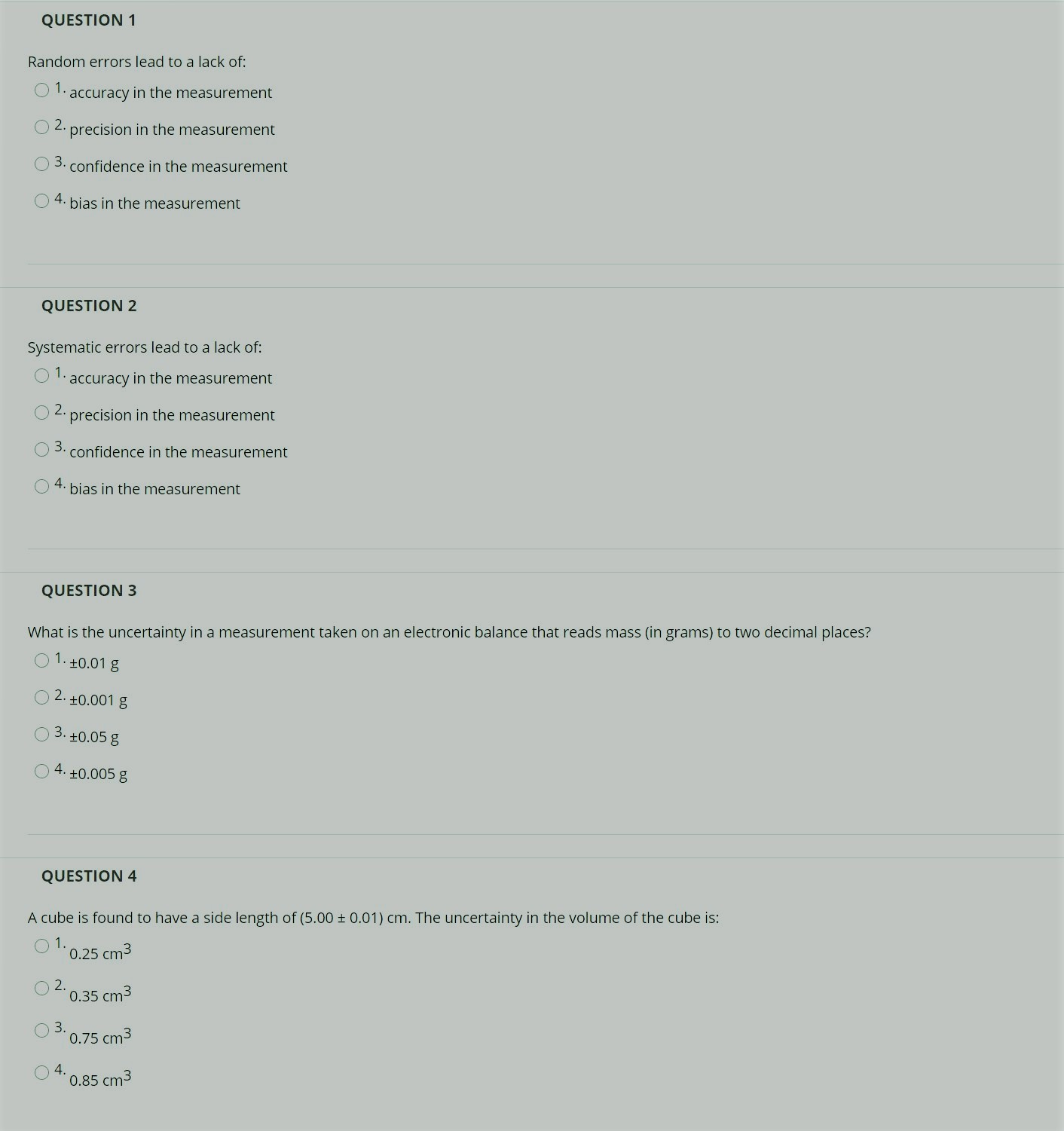Just type in the ans with a brief explanation; e.g Q1 (a,b) so and so etc.
Please provide correct answers.
QUESTION 1 Random errors lead to a lack of: 1. accuracy in the measurement 2. precision in the measurement 3. confidence in the measurement 4. bias in the measurement QUESTION 2 Systematic errors lead to a lack of: 1. accuracy in the measurement O 2. precision in the measurement 3. confidence in the measurement 4. bias in the measurement QUESTION 3 What is the uncertainty in a measurement taken on an electronic balance that reads mass (in grams) to two decimal places? O 1. +0.01 8 O 2. +0.001 8 3. + 0.05 8 0 4. +0.005 8 QUESTION 4 A cube is found to have a side length of (5.00 + 0.01) cm. The uncertainty in the volume of the cube is: "0.25 cm 3 O 2. 0.35 cm 3 0 3. 0.75 cm 3 0 4. 0.85 cm 3QUESTION 5 A student uses a protractor to measure an angle to be A = 44 + 10. What value and uncertainty should they report for cos(A)? O 1. 0.7 + 0.1 O 2. 0.7 + 0.01 3. 0.72 + 0.01 0 4. 0.719 + 0.012 QUESTION 6 Consider the strain equation, O = AL/Lo = (Lf - Lo) / Lo. Taking the uncertainty in the final length to be SL and the uncertainty in the initial length to be Lo, the uncertainty in the strain is given by: 0 1 . 0 2 . 1( 5 )54+ ( - 2 - )5Lo 0 3. 50 =(254x) +(-=SLO) 04. 50 = 1 Li -SL 2 + Lo2SLO? QUESTION 7 You measure the mass of piece of gold to be 34.5 g, but the true value is 35.0 g. What is the percent error in your measurement? 0 1.1.43% O 2. 1.44% O 3. 1.45% O 4. 1.46% QUESTION 8 You measure the length of a desk using a meter ruler. After measuring the desk, you realise that the end of the ruler has snapped off just below the 3 cm mark. What kind of error is will this introduce in your measurement? 1. random error O 2. systematic error 3. parallax error 4. gross errorQUESTION 9 Replicate measurements are taken to reduce the level of random error in an estimate. Assuming individual measurements possess the same amount of random error, the error in the mean of four replicate measurements is smaller than the error in an individual measurement by a factor of: 0 1.1 O 2. 2 0 3. 4 0 4. 16 QUESTION 10 Three consecutive air temperature readings were (23.55 + 0.05) C, (23.50 + 0.05) C and (23.59 + 0.05).C. What is the average of these results, including the uncertainty? O 1. (23.6 + 0.1) C 0 2. (23.55 + 0.03)C 3. (23.55 + 0.05)C 0 4. ( 23.55 + 0.15)C









